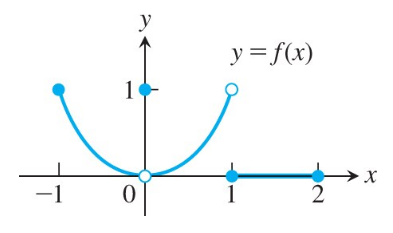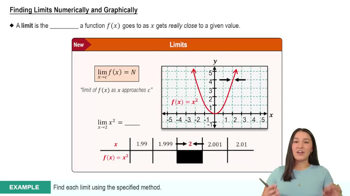Using the Formal Definition
Prove the limit statements in Exercises 37–50.
lim x→0 x sin (1/x) = 0
<IMAGE>

 Verified step by step guidance
Verified step by step guidance Verified video answer for a similar problem:
Verified video answer for a similar problem:



 6:47m
6:47mMaster Finding Limits Numerically and Graphically with a bite sized video explanation from Patrick
Start learning